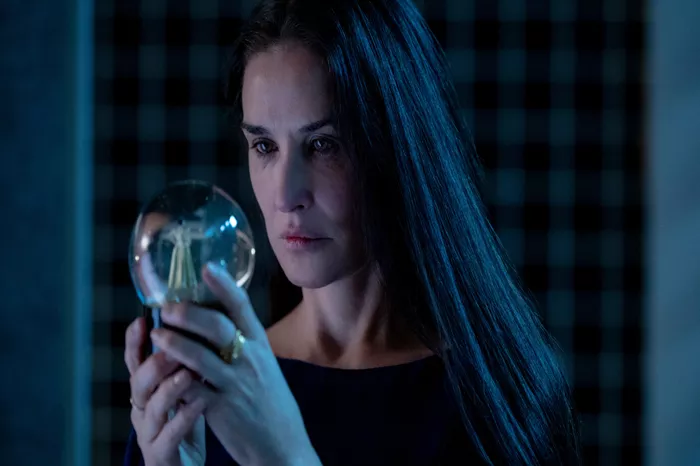Coralie Fargeat’s sophomore film, The Substance, opens with an eye-catching scene: a gloved hand injects a neon green liquid into an egg, setting the stage for a blend of humor and horror. The film swiftly transitions into a montage showcasing a Walk of Fame star dedicated to “Elisabeth Sparkle,” a character played by Demi Moore, who embodies a once-celebrated actress grappling with the harsh realities of aging in Hollywood.
Moore’s character, Miss Sparkle, faces a painful reality after being dismissed from her television workout program by network head Harvey (Dennis Quaid), who is in search of a replacement under 30. As Elisabeth mourns her dwindling career, a dramatic turn occurs when she finds herself in the hospital after a collision with a truck. There, she encounters an alluring male nurse who discreetly offers her a USB stick advertising a product called The Substance.
Upon calling the number provided, Elisabeth learns about a serum promising to unlock a younger, “more perfect” version of herself, with one catch: she must alternate living in her older body every other week. What unfolds is a wild ride filled with shocking imagery and absurd plot twists that are bound to polarize audiences.
Fargeat’s film is an audacious exploration of femininity, drawing comparisons to her 2017 debut, Revenge. Critics may argue that The Substance relies heavily on shock value; however, this very ethos adds to its allure. The film presents a richly developed world, fully immersing viewers in its bizarre yet captivating narrative.
Moore delivers a standout performance, grounding the film’s surreal elements and providing a relatable anchor amid its chaos. In contrast, Margaret Qualley portrays Elisabeth’s younger self, bringing a whimsical energy that balances the film’s darker themes. The juxtaposition of Moore’s nuanced approach with Qualley’s exuberance creates a compelling dynamic.
Visually, The Substance is a feast for the eyes. Cinematographer Benjamin Kracun captures a vibrant, exaggerated version of Los Angeles, filled with neon lights, towering billboards, and striking color palettes. While some scenes may overwhelm the senses, the film’s aesthetic choices never feel arbitrary.
The energetic techno score enhances the feverish atmosphere, contrasting playful sequences with unsettling moments, effectively heightening the tension throughout the film.
Though The Substance may not be suitable for all audiences—definitely not a first-date pick or a Sunday afternoon viewing with family—its audacious blend of comedy and horror marks a significant moment in experimental filmmaking. Fargeat is solidifying her status as a distinctive auteur, and this release promises to expand her dedicated fan base. As viewers ponder what might come next from her, one thing is certain: the conversation around The Substance is only just beginning.
Related topic:
Is Joker a Good Movie? [Revealed]
Where Can I See the Film Sicario?

